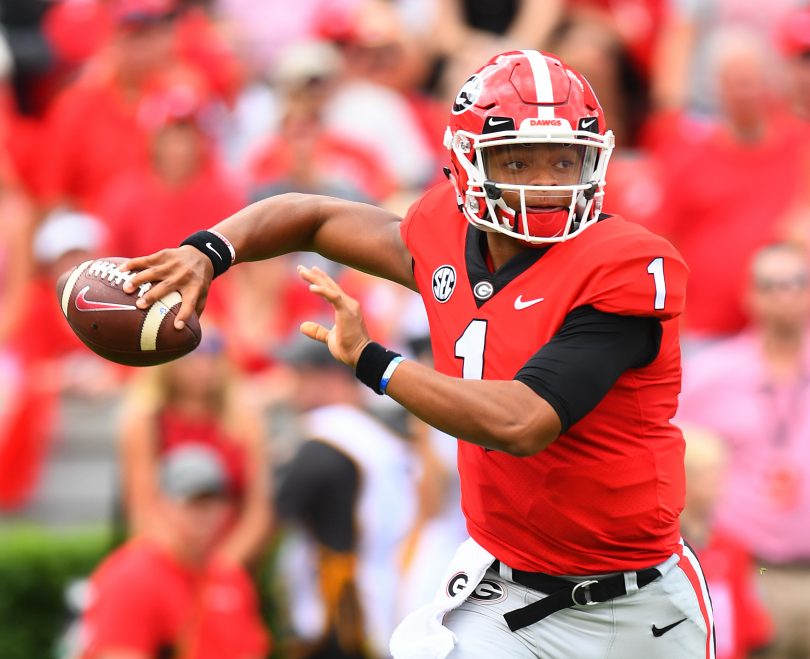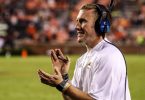Since becoming reality in October, the NCAA’s new rule allowing transfers to declare their intentions has turned college football into a Star Trek episode.
“The transfer portal … to boldly go where no student-athlete has gone before.” Beam them elsewhere, Scotty.
The NCAA’s new policy allows student-athletes to just tell their current school they plan to transfer. Their name then goes into the “transfer data base” — portal sounds way cooler. And the “NCAA transfer portal” is leading to pearl clutching that college football is facing full-fledged free agency. The horror.
As often happens when the NCAA tries to make athlete-friendly changes to its bloated rule book, the reality of application leads to tapping the brakes.
The NCAA’s committee for legislative relief has started a “holistic” (NCAA $5 word) review of the new transfer guidelines. If that committee recommends any tweaks, they would be presented to the Division I Council. However, the soonest any changes would go into effect would be the 2019-20 academic year.
In the major pro sports, free agency arrived in baseball in 1976, in the NBA in 1988 and in the NFL in 1993. College football coaches, among the most paranoid and controlling in sports, regard the words “free agent” the same way they do “NCAA investigation.”
Under the new rule, The Associated Press reports that 51 of the 63 FBS football players who have sought an immediate eligibility waiver have received one. That’s a high success rate.
“Each waiver request is reviewed individually, as they each present a unique fact pattern and almost always confidential information of the student,” said Kaity McKittrick, deputy athletics director and senior woman administrator at Lafayette and chair of the committee for legislative relief. “Our committee and the staff operate with the membership’s guidelines in mind and are not driven by a specific approval percentage.”
If there is a Curt Flood of football free agency, it’s Justin Fields. In just over a month, he went from being Georgia’s backup quarterback to Ohio State’s presumptive starter for 2019 with three seasons of eligibility. After his freshman season as Jake Fromm’s backup, it was apparent that Fields wasn’t going to be the Bulldogs’ starter. Fields transferred to Columbus because the Buckeyes needed a QB. If you believe otherwise, please take a seat in the VIP Naïve Room.
Tate Martel, who transferred from Ohio State to Miami (Fla.) also hopes for a favorable NCAA ruling so he can play in 2019. Ditto for receiver Bru McCoy, who transferred from USC to Texas and hopes to play for the Longhorns in 2019. Martel, like Fields, is moving to a school that needs a starting quarterback. Many believe the NCAA’s decision on his eligibility request will be a watershed decision.
According to the NCAA, ruling on a transfer request comes down to “documented mitigating circumstances that are outside the student-athlete’s control and directly impact the health, safety and well-being of the student-athlete.” NCAA vice president of academic and membership affairs Dave Schnase, told the AP, “We feel like the pendulum has swung back to the right place.”
However, the NCAA’s decision making on transfer waivers employs a combination of Magic 8-Ball, Ouija board and blind dart throwing. Exhibit A: Basketball player Teddy Allen transferred from West Virginia to Wichita State and sought a waiver to play this season. It was denied. If you read his story and have a shred of empathy, you’ll be baffled as to why the NCAA played hard ball.
Stanford coach David Shaw told ESPN.com that “It’s really messy right now… It’s become difficult for coaches to manage their rosters.” Wake Forest coach Dave Clawson said, “It’s too easy to let kids quit.” TCU coach Gary Patterson is one of the coaches hoping the NCAA will reconsider and tweak its new “instant eligibility” rule.
“When I see the guy (Schnase) bragging about how many waivers (are approved), that’s not what this is about,” Patterson told ESPN.com. “In how many households are the teenagers making decisions? Why are we sitting here saying they need more leverage? This waiver thing, we’ve got to help people that truly have a problem. The portal will get worse — transfers, waivers — if we don’t do something about it.”
The NCAA entered semi-free agency in 2006 when it adopted the graduate transfer rule. That allows a student-athlete who graduates with remaining athletic eligibility to transfer to a different school and be immediately eligible. The intent was for the student-athlete to work toward a graduate degree at his new school. (And never mind it takes two years of full-time course work to earn a graduate degree.)
The irony for football coaches is that their sport and the way they run their programs is set up perfectly for the grad transfer free agent. The top players who earn their high school degrees early can enroll in college for the spring semester and get a head start before they’ve played a college snap. Then the “off-season programs” conducted in the summer require players to stay on campus in summer school, further accelerating degree advancement.
Instead of celebrating the fact that their exemplary young men are earning degrees, coaches get prickly over losing a commodity before consuming its four full seasons of competition. Some student-athletes – such former Texas and current SMU quarterback Shane Buechele – take care of class room business so well they graduate and transfer with two seasons of eligibility.
The NCAA uses the high-falutin’ term “year in residence” to describe the time a transfer must spend in dry dock. And never mind that in basketball, the sport that financially supports the NCAA, the one-and-done rule (yes, yes, it’s an NBA rule) means that the top American players spend about six months in residence on campus on their way to shaking Adam Silver’s hand on draft night.
There has been and apparently always will be a disconnect within the NCAA when it comes to football and basketball. Rules passed for hoops – for instance, the brain-dead decisions to “clean up” summer recruiting – are in place because the NCAA is guarding its ATM.
Control of college football begins and ends with the NCAA Manual. The sport is run by the Five Dons – the commissioners of the Power Five conferences. The money that flows from TV contracts, the playoff and bowl games go straight to the leagues.
That means NCAA decisions to change the rules often piss off football coaches, who just want to be left alone to try and win championships while renegotiating their contracts with off-season rumors of job offers.
Perhaps the current transfer waiver policy will be a one-year wonder. If not, rest assured that if there are ways and means to take advantage of the new “free agency,” college coaches will figure out a way. If there’s anything they’ve achieved doctorate level in, it’s finding loopholes. It comes as naturally as scheming how to utilize or stop the run/pass option.
(Editor’s note: The Teddy Allen story can be found at https://theathletic.com/655275/2018/11/15/this-comes-first-teddy-allen-wants-to-play-basketball-again-but-hes-at-wichita-state-for-his-mental-health/
The 247sports.com website maintains a live transfer portal tracker at: https://247sports.com/Season/2019-Football/TransferPortal/ . )







